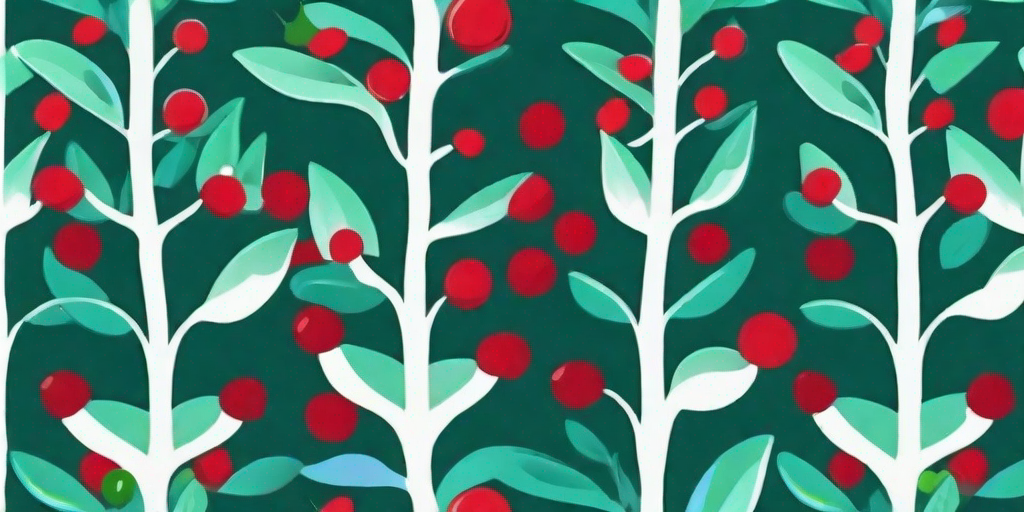
Blueberries, the tiny indigo orbs of sweetness, are a gardener's delight. They are not only delicious but also a visual treat. However, the sight of red spots on your blueberry leaves can turn your gardening experience sour. But worry not, fellow green thumbs! We're here to help you bid adieu to these pesky red spots and ensure your blueberry plants are as healthy as a horse.
Understanding the Red Spots: A Detective's Approach
Before we dive into the solutions, let's play Sherlock Holmes for a bit and understand the problem. The red spots on your blueberry leaves are not a fashion statement from the plant kingdom. They are a sign of distress, a cry for help. These spots are usually caused by a fungal disease known as leaf rust.
Leaf rust, also known as 'The Red Polka Dot Disease' in the gardening underworld, is caused by the fungus Pucciniastrum Vaccinii. This fungus is not a fan of healthy plants and tends to attack the weak ones. So, if your blueberry plant is sporting red spots, it's time to step up your plant parenting game.
Spotting the Symptoms
Leaf rust doesn't just show up one fine morning. It sends out invitations first in the form of symptoms. These include yellowing leaves, tiny red spots on the underside of the leaves, and a general lack of enthusiasm from your plant. If you spot these signs, it's time to roll up your sleeves and get to work.
Remember, the earlier you catch these symptoms, the better the chances of your plant's survival. So, make it a habit to inspect your plants regularly. Consider it a daily meditation practice, if you will. A little 'me' time with your plants.
Getting Rid of the Red Spots: The Action Plan
Now that we've understood the problem, let's move on to the solutions. Here's a step-by-step guide to help you say goodbye to the red spots on your blueberry leaves.
Step 1: Prune the Affected Areas
First things first, get rid of the infected leaves. This might seem harsh, but it's a necessary step to prevent the fungus from spreading. Use a clean, sharp pair of pruning shears for this task. And remember, cleanliness is next to godliness. So, make sure to clean your shears before and after pruning to avoid spreading the fungus.
Once you've pruned the affected areas, dispose of the leaves properly. Don't just throw them in your compost pile. That's like inviting the fungus to a buffet. Instead, bag them up and throw them in the trash.
Step 2: Apply a Fungicide
Once you've pruned the affected areas, it's time to bring out the big guns - fungicides. Apply a fungicide to your plant according to the instructions on the label. Remember, too much of anything is bad. So, don't go overboard with the fungicide.
Also, it's a good idea to rotate between different types of fungicides to prevent the fungus from developing resistance. Think of it as keeping the fungus on its toes.
Step 3: Improve Your Plant's Health
The best defense against any disease is a strong immune system. The same holds true for plants. A healthy plant is less likely to fall prey to leaf rust.
So, make sure your plant is getting enough sunlight, water, and nutrients. Also, ensure it's planted in well-draining soil. After all, no one likes wet feet, not even plants.
Preventing Future Outbreaks: The Proactive Approach
As the old saying goes, "Prevention is better than cure." This holds true for leaf rust as well. Here are some preventive measures you can take to keep the red spots at bay.
Space Your Plants Properly
Leaf rust loves crowded spaces. It thrives in damp, humid conditions, which are common when plants are planted too close together. So, give your plants some room to breathe. Space them properly to ensure good air circulation.
Think of it as social distancing for plants. It might seem antisocial, but it's for their own good.
Water Your Plants Correctly
Watering your plants is not just about quantity, it's also about technique. Always water your plants at the base, not from the top. Wet leaves are a breeding ground for fungi.
Also, water your plants early in the morning. This gives the leaves enough time to dry before nightfall. Remember, a dry plant is a happy plant.
Frequently Asked Questions
- Can leaf rust kill my blueberry plant?
Yes, if left untreated, leaf rust can kill your blueberry plant. However, with early detection and proper treatment, your plant can make a full recovery.
- Can I eat the blueberries from a plant with leaf rust?
Yes, the blueberries from a plant with leaf rust are safe to eat. However, the quality of the fruit might be affected.
- How can I prevent leaf rust?
Preventing leaf rust involves maintaining good plant health, proper spacing between plants, and correct watering techniques.
So, there you have it, folks! A comprehensive guide to saying goodbye to red spots on your blueberry leaves. Remember, a little care goes a long way in ensuring the health of your plants. So, keep those green thumbs up and happy gardening!











